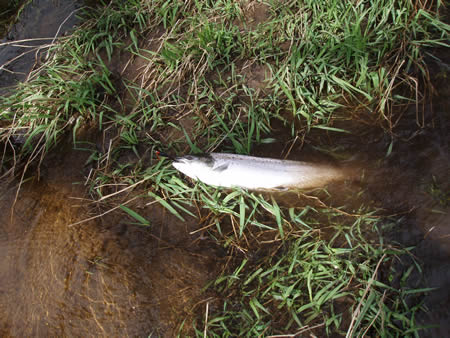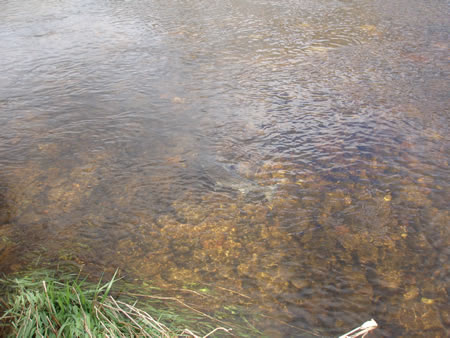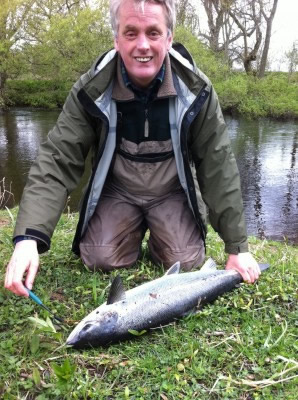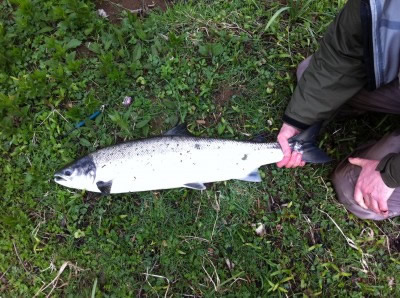These bulletin blogs represent news about Finavon and the South Esk, and my views as a riparian owner. They are not the views of any other organisation, nor are they designed to promote the interests of any individual or organisation other than Finavon Castle Water and factors affecting the fishery. Tony Andrews
As of last Friday 27/4 the Marine Scotland team of scientists based in Montrose had tagged 94 salmon caught in the Usan nets. It hasn’t been easy to catch, tag and release the target number of fish and it is to the credit and determination of Julian and his colleagues that they have kept up to their demanding target number. At the end of the first phase of the project they should have reached a total of 150 tagged fish.
Of those 94 fish tagged, 13 have entered the South Esk, of which 4 have dropped downstream of the Bridge of Dun receiver.
3 fish have entered the North Esk, of which 2 are now upstream of Logie and 1 fish entered the Tay after being tagged on 10/4 and recorded at Almondmouth on 15/4.
At this stage, so early in the project, it would be wrong to speculate on what these data are telling us. From the facts available I find it fascinating that, with 94 fish tagged and the project into its 12th week, only 17 (18%) fish have been recorded. Of the total number of fish tagged only 13.8% have entered the South Esk but only 9.6% have stayed in the river. With 1 fish in the Tay and three in the North Esk the project confirms that the Usan fishery is exploiting salmon (and presumably sea trout?) on a mixed stocks basis.
But the really interesting aspect of this for me is the number of fish that are still at sea, gone somewhere else or are dead (77 or 72.38%). We have already learnt from the project that salmon hang around in the sea for weeks sometimes, presumably in the coastal zone where they may be vulnerable to predation and poaching.
I didn’t attend the Board AGM but I was saddened to hear of the attitude of some participants to the work of the scientists. I hope that, as the data emerges and we start to understand more about the behaviour and destinations of our early running fish, these attitudes may change and people become more supportive of our scientists who, in my view, are doing a first rate job.
TA



